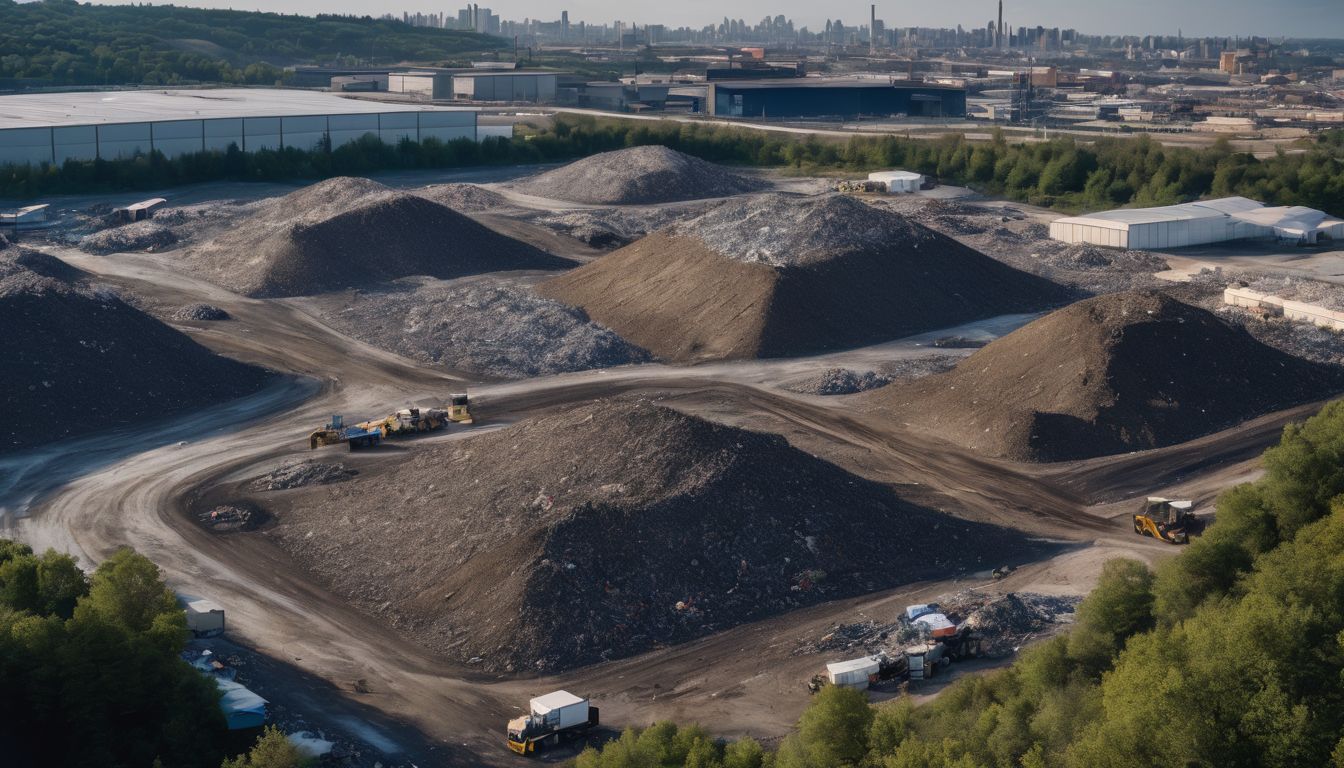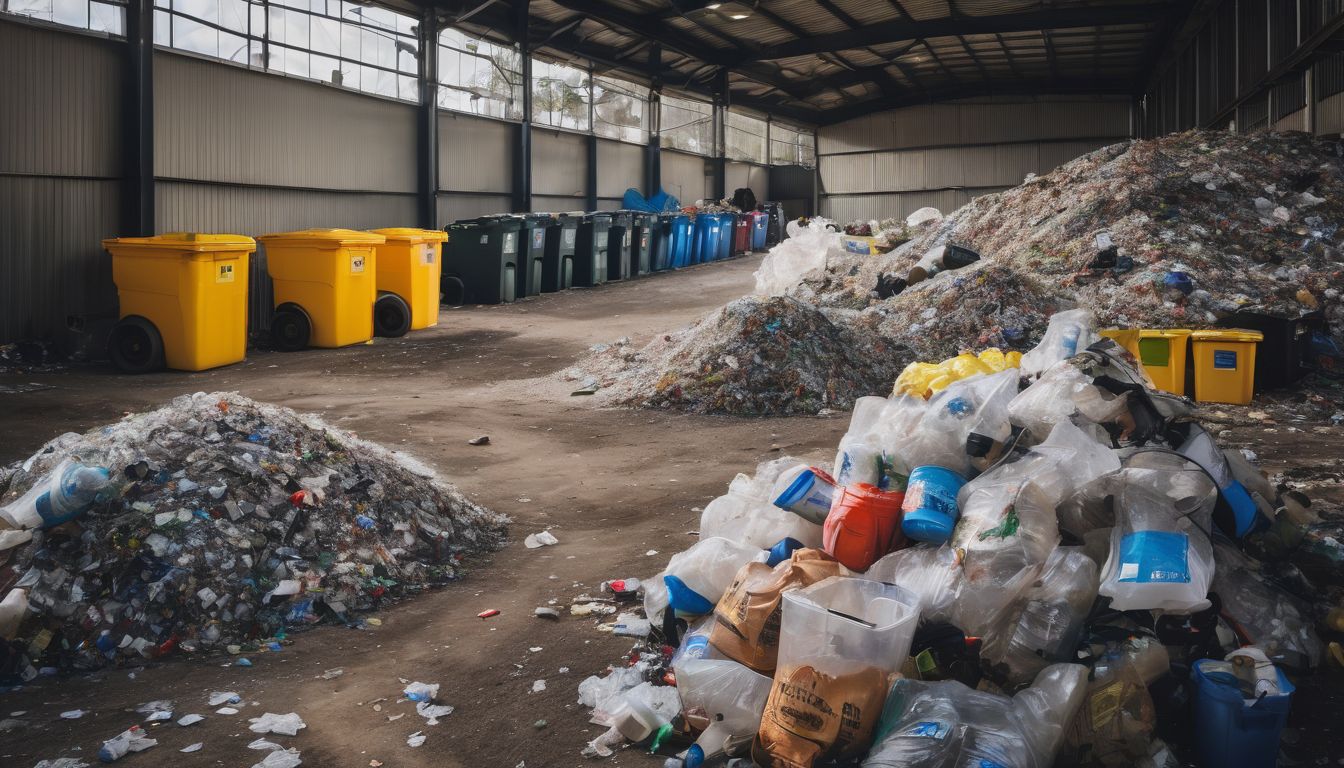What is a Home Recycling Station?
A home recycling station is a sorting system for recyclables. Even though recycling is one of the easiest things to do, at times we neglect to do it simply out of sheer laziness. When it’s convenient we have little trouble putting recyclables in the designated container. By setting up your own recycling station, you will make it more convenient to recycle and increase your recycling frequency. It also allows for an organized system of recycling as opposed to having piles of clutter around the house.
 1
1
BENEFITS for the Environment:
According to the EPA, in 2011 Americans produced 250 million tons of solid waste but only recycled 66.2 million tons, excluding food and yard trimmings which was 20.7 million tons.2 This means that only 26% of materials that were not used for compost were recycled.The chart below shows the percentage of different materials that made the 250 million tons of munciple solid waste in 2011. With paper being the biggest chunk of what we throw out it’s not hard to believe that a forest the size of Philadelphia (74,000 acres) is destroyed each day.3 By recycling, we not only save trees and habitats but we also play a part in conserving energy. The energy required by a processing plant to generate a can or container from raw materials is far greater than the energy required by a recycling plant to make the item from recycled materials. A recycled aluminum can could run a television for three hours and a recycled glass bottle could light a light bulb for four hours.4
 5
5
BENEFITS for Your Wallet:
Recycling can be profitable! Items that carry a redemption value can be redeemed for cash on the spot when you drop your recyclables off at a collection facility. The Container Recycling Institute estimates that in 2011 Americans threw away more than $600 million worth of aluminum cans.6 Even if you’re not the type to haul a bunch of cans to a recycling center curbside recycling services can still pay off. Providing the pick-up service costs the city money and if not enough people are recycling the city needs to assess the difference to its residents with garbage fees and other taxes.
Cost: Low to Moderate
Your costs will vary depending on the containers you select to sort your recyclables.
Time and Effort: Low to Moderately Low
The initial set up can be completed fairly quickly. After it is set up, remember to take a few minutes a week to maintain the area and keep it clean.
Setting Up Your Recycling Station:
 7
7
- Determine where you want to locate your recycling station. Since the most waste is generated in the kitchen it is an ideal locale, but anywhere is fine.
- Find a recycling center in your area. You can do this by calling 1-800-CLEAN-UP or by visiting Earth911 Find out what materials they accept for recycling. If your city offers curbside recycling, contact them to find out what is accepted.
- Based on what is acceptable, determine how many storage containers you will need. When choosing your storage units take into account the size of your designated area and the amount of the items your household is likely to generate. Before you go out and invest money in new products see what you have around the house that can be used. Old laundry baskets, cardboard boxes, and any unused containers lying around the house are perfectly suitable.
- If your center is going to be in plain sight you may want to take some time to make it more aesthetically pleasing. Be creative about it. Use leftover paints and wallpaper or even old clothes to spice up your containers. Find ways to make your station blend into its surroundings. Have some fun with it! Be sure to place clear labels on the containers so there is no confusion about what goes where.
- Arrange your containers in a way that works best for your household. Now begin utilizing your station!
- Set up a recycling schedule to follow. Taking into account the recycling center’s distance from your home, determine whether you will make daily, weekly or monthly trips. Post the schedule in your recycling station area to serve as a reminder. If you have curbside recycling, post a schedule of the days it is collected. When you make recycling part of your routine, the more likely you are to stick with it!
- Inform everyone in your household of the recycling plan so that everyone can do their part. You can even add incentives (i.e. whoever drops the recyclables off collects whatever money it may yield) to increase participation and generate enthusiasm. Whenever you have guests over be sure to point out the station to them.
What are your recycled goods used to make?
Of course they can be used to remake the same product, but they can also be used for other things as well:
- 36 2-liter PET plastic bottles can be turned into one square yard of carpet
- 1,050 recycled milk jugs can be transformed into a 6 foot plastic park bench
- Recycled aluminum makes in way into bikes, cars, and appliances
- Five 2-liter PET bottles can be used to fill a ski jacket
- Recycled glass can be used for roads, marbles, and surfboards
https://web.archive.org/web/20160403220708if_/http://www.youtube.com/embed/zyF9MxlcItw 8
Close the Loop:
Recycling is the just first step of the process. Purchase goods that are not only recyclable, but that are also made from recycled materials. An increase in the demand for goods made from recyclables will enlarge the market and increase the number of goods made from previously used materials.




